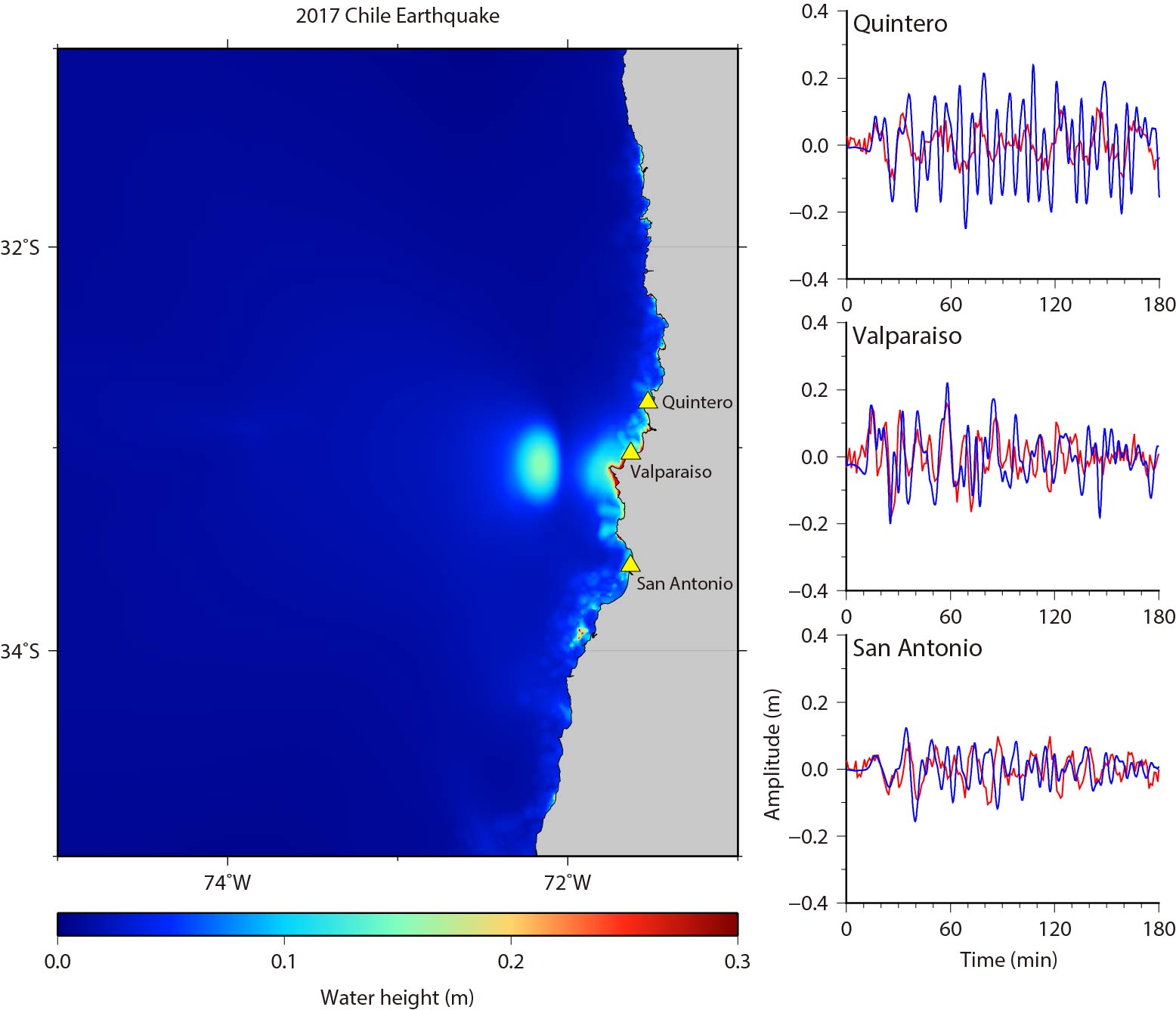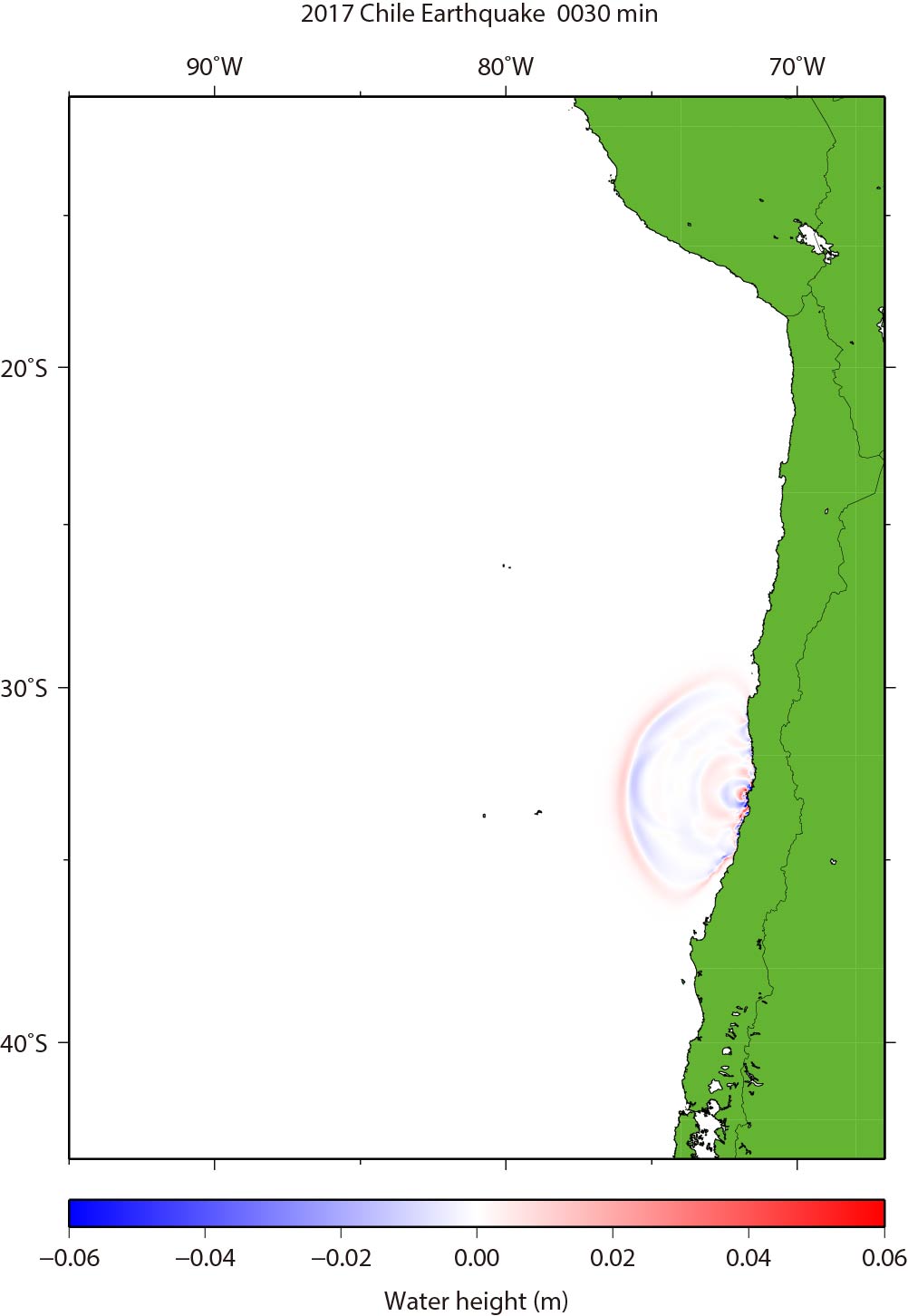| Chile Tsunami on Apr. 24, 2017 |
We have simulated the tsunami generated from the Chile earthquake (33.073°S, 72.051°W, depth=25.0km, M = 6.9 at 21:38:26 UTC according to
USGS) on April 24, 2017 (Fig. 1).
The assumed tsunami source is located within the aftershock area (Fig. 1). The fault length and width are 30 km × 15 km. The focal mechanism is strike:4º, dip:14º, slip:99º from the USGS's W-phase moment tensor solution. The top depth of the fault was assumed to 20 km. The average slip on the fault is 1.3 m. The seismic moment is 2.9 x 10**19 Nm (Mw = 6.9) assuming the rigidity of 5 x 10**10 N/m**2.
As the initial condition for tsunami, static deformation of the seafloor is calculated for a rectangular fault model [Okada, 1985] using the source model.
The used bathymetry data is the 30 arc-second grid data from
GEBCO for coastal tide gauges. For the near-field computation we used 12 arc-second grid data resampled from the GEBCO data.
To calculate tsunami propagation, the linear shallow-water, or long-wave, equations were numerically solved by using a finite-difference method [Satake, 1995].
We have downloaded the
Tide gauge
data from UNESCO/IOC's web site,
and compared the simulated tsunami waveforms and the observed ones (Fig. 2).
We can see the tsunami propagation in the Pacific ocean (Fig. 3).

Fig.1 Tsunami Source Model
The red lines indicate uplift with the contour interval of 0.05 m, while the blue dotted lines indicate subsidence with the contour interval of 0.05 m. Aftershocks determined by USGS are shown by red circles. The focal mechanism determined by USGS is also shown.

Fig.2 Maximum Height of Simulated Tsunami and Tsunami Waveforms
Solid lines in red and blue indicate the observed tsunami waveforms and synthtic ones, respectively.

Fig.3 Tsunami Propagation (Click to start animation)
The red color means that the water surface is higher than normal sea level, while the blue means lower.
| by Yushiro Fujii (IISEE, BRI) and Kenji Satake (ERI, Univ. of Tokyo) |
|
|
| References |
|
Okada, Y. (1985), Surface Deformation Due to Shear and Tensile Faults in a Half-Space, Bull. Seismol. Soc. Am., 75, 1135-1154. Satake, K. (1995), Linear and Nonlinear Computations of the 1992 Nicaragua Earthquake Tsunami, Pure and Appl. Geophys., 144, 455-470. |
Last Updated on 2017/4/25